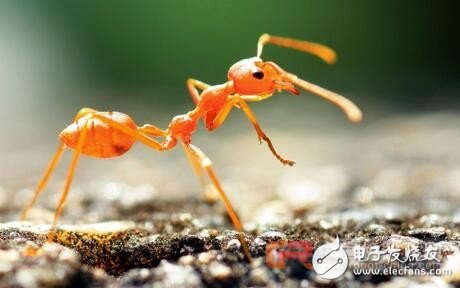Ants are famous for their diligence and teamwork in most people's minds. Recently, it has been found that ants are not only amazing, their positioning and navigation capabilities are far more complicated than people think, and the ability of a small ant to understand the road. More powerful than we thought. Scientists have discovered that regardless of the direction in which the ant faces, they can handle the location of the analysis and navigate successfully.
The scientists who participated in the study came from all over the world, including the research team from the University of Edinburgh in the UK to study how a group of desert ants in Sevilla, Spain, decided to route their routes when carrying different sizes of food. Dr. Antoine Wystrach, who participated in the study, said that they found that the directional ability of ants was not affected by the body direction, and even changing their current body direction did not affect the ability to maintain the direction of travel.
A large number of ants live together in a community in a socialized organization. The division of labor and communication between them has always been an issue of interest to scientists. But in fact, you don't need to look at the entire ant social structure. A small ant alone is worth studying. The worker ants in the nest are responsible for finding food and bringing the food back to the nest for storage, so it is often necessary to pull the food back far away from the nest.

Scientists have previously discovered that ants can use the position of the sun and locate the home route to the surrounding visual memory, but previously thought that the two methods are independent behaviors, and the ants need to face the direction of travel for positioning. But in fact, ants will move backwards when carrying heavier foods, and the latest research shows that ants need to look back from time to time to confirm the surrounding environment, and then use the information they see to determine the route according to the position of the sun. The research team found that in this way, insects can maintain their own nesting route without deviating regardless of the direction they are facing.
Because when ants are carrying small foods, they are facing the direction of travel with food, but when carrying larger and heavier foods, they will drag food and move backwards. The research team set up a sag barrier in the ant's return route to make the direction of the single route, and then let the ants carry large pieces and small biscuits, and then observe how the ants find their way home. The results of the study showed that when the researchers misled the ants' judgments on the position of the sun, the ants would be removed from the correct route.
Use the position of the sun to judge the direction
In previous studies, scientists believed that when ants marched forward, they would compare the scenes they saw today with the visual memories to find the right path. Now the research team has found that when ants move forward in a backwards way, they use the position of the sun as the basis for judging the direction. When the ant is going backwards, in order to ensure that the direction is correct, the cargo will be fixed and put down for a certain period of time, and the direction will be confirmed in the direction of travel. As they turn positive, they can observe the surrounding environment to compare with previous memories and reorient when they get lost.
The results of such research show that ants can deal with the relationship between the external environment space and space, rather than just understanding the relationship between itself and the current space. Ants are very small, but their minds are unexpectedly complex. They have a much more mastery of orientation than human imagination. In their small brains, they can combine different forms of information into a complete judgment basis. Make behaviors. This phenomenon of information transmission also shows that different forms of information in the ant brain can work synergistically in different brain regions. The research team also said that their subsequent research directions may be directed towards unraveling the interactions and interactions between different blocks of the ant brain to understand how insects combine different navigation methods.
The research, in collaboration with scientists from the University of Lincoln, the Australian National University, and the National Center for Scientific Research (CNRS), has been published in the scientific journal Current Biology. These flexible and strong navigation methods found in ants have inspired the development of new computer algorithms and can guide robot operations step by step.
Barbara Webb, a professor at the University of Edinburgh's School of Information, said that although the brain of an ant is only as large as a needle, it can successfully find the correct route under many difficult conditions. Even if it is backward, it is not a problem. Their navigation is like an automatic driving. car.
Studying the behavioral patterns of ant positioning navigation can enhance our understanding of brain function and inspire us to construct robotic internal systems with similar principles. Scientists have been able to simulate neural circuits in the brain of ants, perhaps helping robots in the future, and positioning navigation in natural environments such as forests.
There are many different versions of DIN Connectors. The name of each type comes from the number of pins the connector has (3-pin DIN, 4-pin DIN, etc.) Some of these pin numbers come in different configurations, with the pins arranged differently from one configuration to the next.
DIN cable connector 3-pin, 4-pin, 5-pin, 6-pin, 7-pin, 8-pin degree 180, 216, 240, 262, 270
DIN cables, DIN connector, telephone cable, computer cable, audio cable
ETOP WIREHARNESS LIMITED , https://www.oemwireharness.com